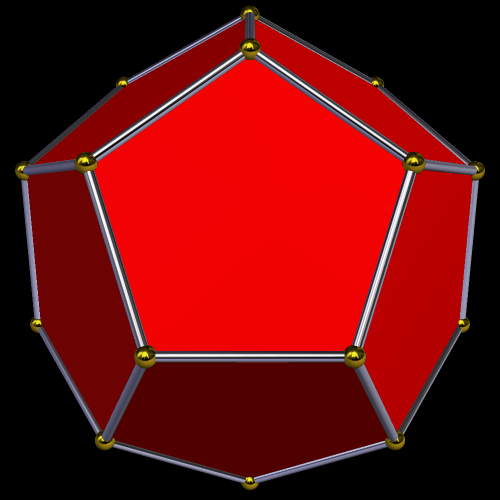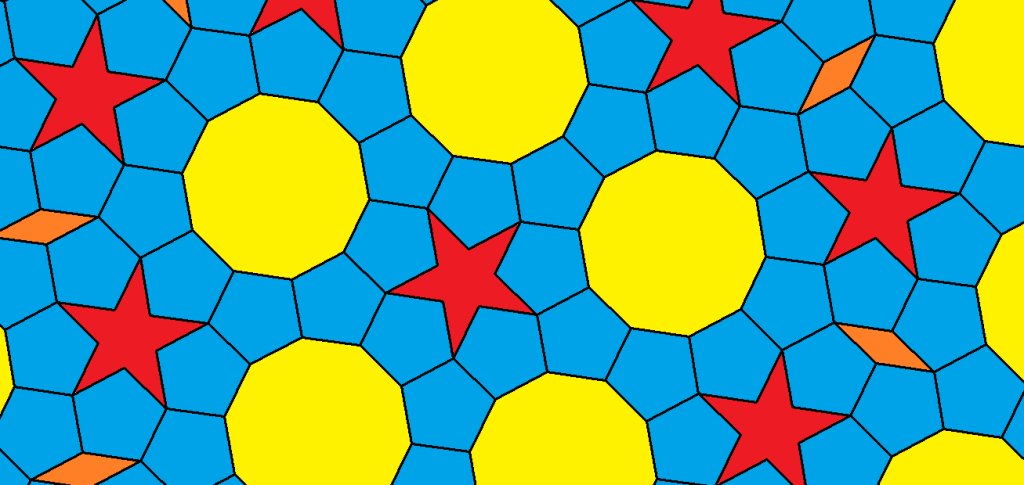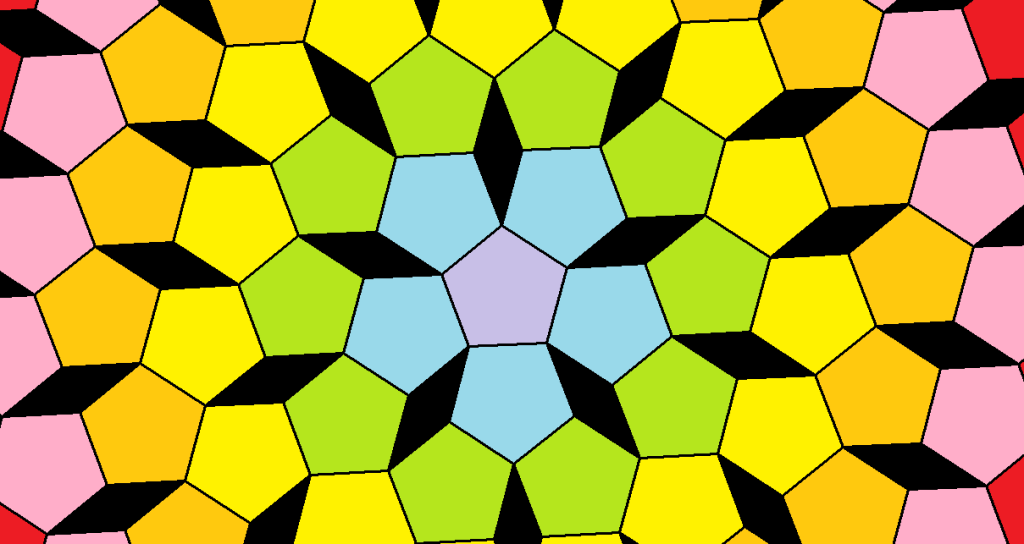Here’s a single dodecahedron.
A new “cluster polyhedron” can be made by augmenting each pentagonal face with another dodecahedron.
If you can do it once, you can do it again, augmenting each pentagon with a new dodecahedron.
Once more.
I made these polyhedral clusters using Stella 4d: Polyhedron Navigator, which you can try for free at http://www.software3d.com/Stella.php.












